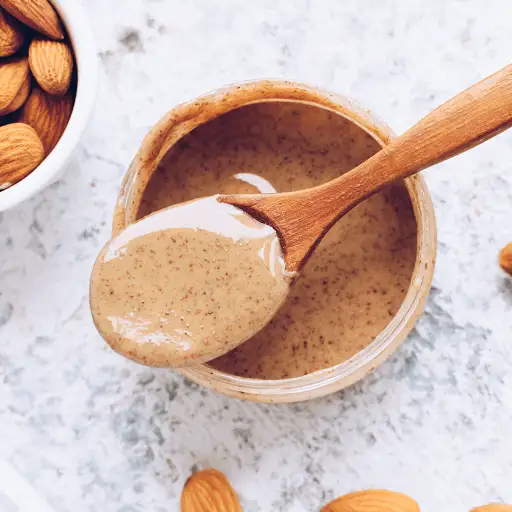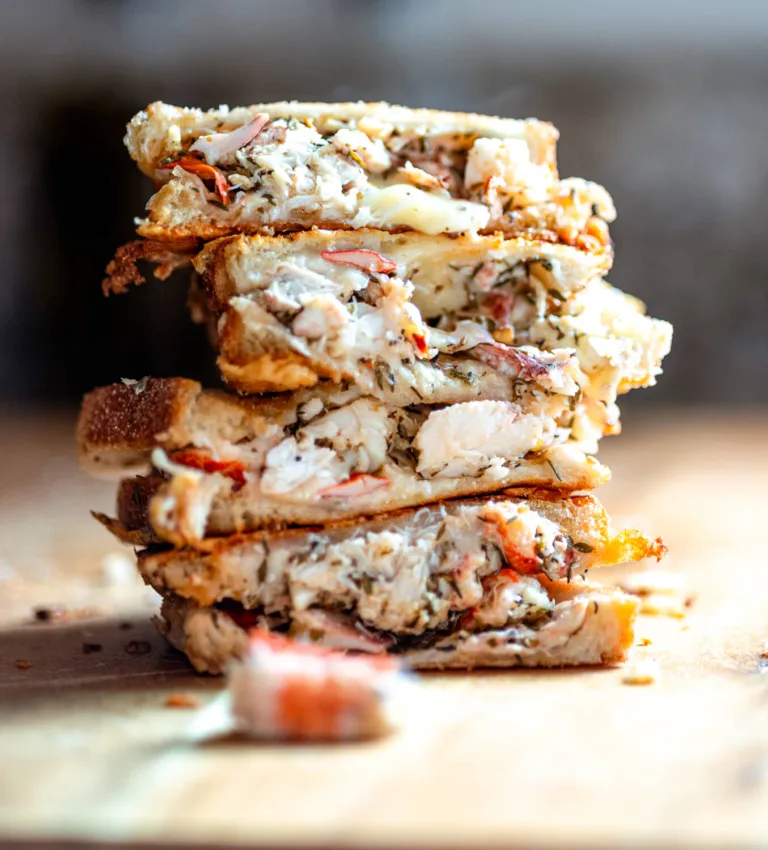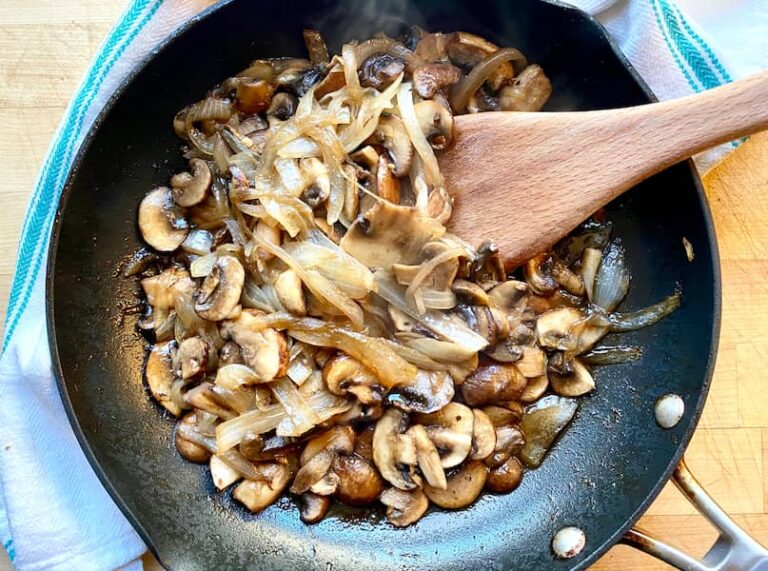I’ll shout it from the rooftops.
I LOVE chicken salad.
Whether it’s a classic chicken salad recipe or something with a twist, there’s nothing better than a good homemade chicken salad.
I almost always have all the common ingredients on hand, so chicken salad is my go-to when I need a quick and easy meal. It’s a great option for both lunch and dinner as it stores well and only gets better as the flavors meld together.
But how long does chicken salad last?
This classic salad can be a potential breeding ground for harmful bacteria if not stored properly.
This delicious dish, often made with cooked chicken, mayonnaise, veggies, and herbs, can quickly turn from delightful to disastrous if left out at room temperature for too long.
So, how long does chicken salad actually last, and how can you ensure you’re enjoying it safely?
Let’s dive into the shelf life of chicken salad and safe storage practices.
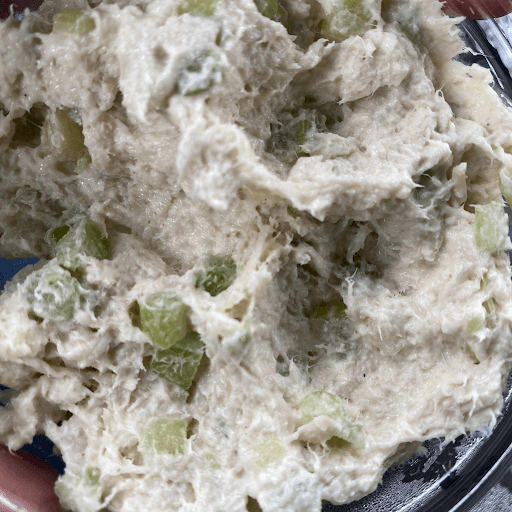
Understanding Shelf Life and What Affects Chicken Salad Longevity
There isn’t a single, universal answer to the question, “How long does chicken salad last?”
Several factors can affect its shelf life:
The Main Ingredient, Cooked Chicken
Chicken is the star of chicken salad but it is also the ingredient most susceptible to spoilage. The United States Department of Agriculture (USDA) recommends storing cooked chicken (including rotisserie chicken) in the refrigerator for only 3-4 days.
This is because cooked chicken is a prime target for bacterial growth, especially at room temperature.
The Binding Agent, Creamy Mayonnaise
That creamy dressing we all love in a chicken salad can also contribute to spoilage.
Mayonnaise is a high-moisture emulsion, meaning it contains both oil and water. This is a breeding ground for bacteria.
While some substitutes like sour cream or plain Greek yogurt might offer slight variations in shelf life, they still require proper storage.
Other Ingredients
While not the main culprits, other common ingredients can also affect shelf life. Fresh fruit, vegetables, and green onions add freshness to a chicken salad but have a shorter shelf life themselves.
Fresh herbs like dill or parsley are wonderful flavor enhancers, but they can wilt and brown and contribute to overall spoilage if not stored correctly.
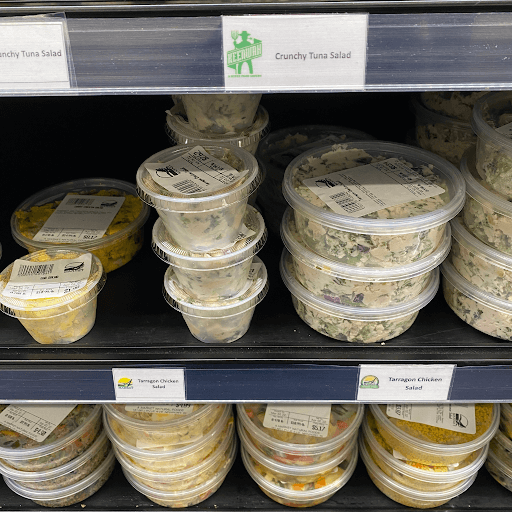
The Importance of Proper Storage and Temperature
Here’s where things get crucial: room temperature is the enemy of chicken salad. The U.S. Department of Agriculture identifies a temperature range between 40°F (4°C) and 140°F (60°C) as the “Danger Zone” for foodborne illnesses.
Leaving chicken salad at room temperature for even a few hours allows bacteria to multiply, increasing the risk of food poisoning.
Never, ever leave your chicken salad out on a hot day. This is just asking for trouble!
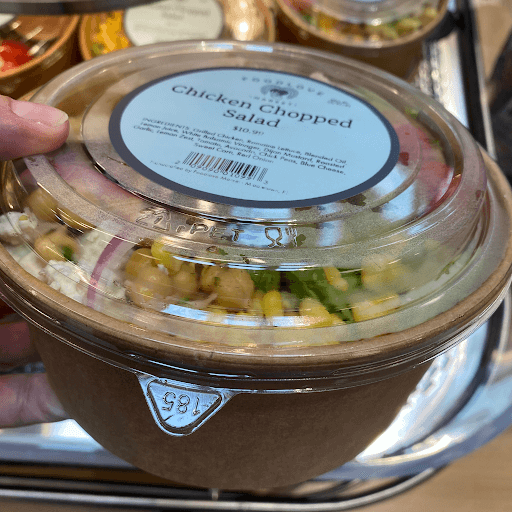
So What’s the Solution?
Proper refrigeration is key. I always store my chicken salad, homemade or store-bought, in an airtight container in the refrigerator. Immediately after preparation or purchase, it goes right back in the fridge.
An airtight container prevents contamination from other foods and helps maintain moisture levels.
What About Store-Bought Chicken Salad?
Chicken salad from the grocery store usually comes in a sealed container. Pay attention to the expiration date on the lid.
Do not consume chicken salad past the expiration day to avoid any risk of foodborne illness.
Danger Signs of Spoilage and When to Say Goodbye
Even with proper storage techniques, chicken salad will eventually spoil. Here are some tell-tale signs to watch out for:
Unpleasant Smell
Fresh chicken salad should have a pleasant aroma. A foul or off-putting odor is a clear sign of spoilage.
Mold Growth
Mold is never a good sign. Discard any chicken salad with visible mold growth.
Discoloration
Fresh chicken salad should have a light color. If the chicken or mayonnaise appears discolored or gray, it’s time to toss it.
Slimy Texture
Chicken salad should have a creamy or slightly chunky texture. A slimy texture indicates bacterial growth.
Beyond 3-4 Days: Freezing Chicken Salad (Proceed with Caution)
The short answer is that chicken salad with traditional mayonnaise-based dressing isn’t a good candidate for freezing.
Here’s why: Freezing disrupts the emulsion of mayonnaise, leading to a watery and unappetizing texture upon thawing. If you end up freezing it, keep the frozen chicken salad in the refrigerator until fully thawed.
However, if you’re looking for a healthy chicken salad option, using alternatives like olive oil and lemon juice as a dressing might be a good option for freezing.
Maximizing Shelf Life
Here are some additional tips to help your chicken salad stay fresh and delicious for as long as possible:
Start with Fresh Ingredients
Fresh, high-quality ingredients contribute to a longer shelf life.
Use Cold Ingredients
Cool cooked chicken entirely before adding it to the salad.
Stir Well
Ensure all ingredients are well-combined, especially the mayonnaise, which helps distribute preservatives throughout the salad.
Cook Thoroughly
Always cook chicken to a safe internal temperature (165°F or 74°C) as recommended by the USDA.
Consider Variations
If you’re planning a big batch of chicken salad, research variations that might last slightly longer, like omitting fresh herbs or using chopped dried herbs instead.
Creative Uses for Leftover Chicken Salad
Chicken salad doesn’t have to be confined to just sandwiches! Beyond sandwiches, there are many ways to use up a good chicken salad. Here are some creative ways to enjoy your leftover chicken salad, even after a few days:
Lettuce Wraps
For a low-carb, gluten-free option, ditch the bread and scoop your chicken salad into lettuce wraps. I love using a crisp Bibb lettuce.
Salad Topper
Kick up the protein on your salad with a scoop of chicken salad.
Grain Bowls
Turn your chicken salad into a protein-packed grain bowl. Serve over brown rice, quinoa, or chopped romaine. Add other toppings like chopped vegetables, avocado slices, a fried egg, or a drizzle of balsamic vinaigrette.
Stuffed Peppers
Fresh bell peppers make a colorful and healthy vessel for leftover chicken salad.
Stuffed Celery or Cucumber Boats
Hollow out celery or cucumber stalks and fill them with chicken salad for a healthy and fun appetizer.
Vegetable Pinwheels
Spread chicken salad on tortillas or flatbread, add your favorite chopped veggies (spinach, bell peppers, carrots), roll up tightly, and slice into pinwheels.
Endive Spears with Chicken Salad
Scoop a small amount of chicken salad onto endive spears for a sophisticated party hors d’oeuvre.
Savory Crepes
Fill crepes with chicken salad for a delicious brunch option.
Chicken Salad FAQs
Can I freeze chicken salad? I do not recommend freezing chicken salad. Traditional mayonnaise-based chicken salad could be better for freezing.
What can I use instead of mayo? Switch up your traditional chicken salad recipe with Greek yogurt, a little Dijon mustard, and a squeeze of lemon instead of mayo. Other binder options include avocado oil, hummus, and pesto.
Is chicken salad dairy-free? Most chicken salad recipes will be dairy-free. Although it is a common misconception, traditional mayo does not contain dairy. Always double-check the ingredient label on your store-bought mayo to ensure it contains no milk products. A chicken salad recipe is not dairy-free if it includes sour cream or Greek yogurt as a binder.
Is chicken salad gluten-free? While the main ingredients are gluten-free, the recipe will always depend on this. Be cautious of potential gluten sources like breadcrumbs, chicken broth containing flavored vinegar (like malt vinegar), or commercial mayonnaise (some thickeners contain gluten).
Is chicken salad healthy? It can be! Choose lean protein (chicken breast) and healthy fats (avocado or olive oil) in the dressing. Limit added sugars and processed ingredients.
What cut of chicken is best for chicken salad? Cooked, shredded chicken breast is a classic choice. For convenience, you can also use rotisserie chicken.
Can I use leftover chicken for chicken salad? Absolutely! Leftover chicken is perfect for this dish.
How long does chicken salad stay good in the fridge? Homemade chicken salad typically lasts 3-4 days in the refrigerator when stored in an airtight container.
What kitchen essentials do I need for chicken salad? All you need are a large mixing bowl, a fork, and a spoon. Pro tip: Shred your chicken breasts in a food processor.
How can I meal prep with chicken salad?! I love pairing a classic sandwich with fresh fruit and a bag of potato chips for on-the-go lunches. Such an easy meal!
The History of Chicken Salad
Chicken salad has a surprisingly long and fascinating history. The concept of using leftover chicken in a salad likely emerged in the 1800s. This allowed cooks to avoid waste and create a new dish from already available ingredients.
Early American cookbooks, such as Sarah Rutledge’s “The Carolina Housewife: Or, House and Home” (1847) and Abby Fisher’s “What Mrs. Fisher Knows About Old Southern Cooking” (1881), contain recipes for chicken salad that incorporated ingredients like celery and mayonnaise — which was also homemade in those days!
Some credit Liam Gray, owner of Town Meats in Wakefield, Rhode Island, with creating the first commercially available chicken salad in 1863.
His version included leftover chicken, mayonnaise, tarragon, and grapes.
The popularity of this dish led him to turn his shop into a successful deli.
During the 20th century, chicken salad became a staple in American cuisine. It began appearing on menus at restaurants, cafeterias, and catered events as a versatile and crowd-pleasing dish.
Today, the possibilities for chicken salad are endless. Cooks experiment with different ingredients, flavor profiles, and textures. Variations include curried chicken salad with curry and raisins, Mediterranean chicken salad with sun-dried tomatoes and olives, and even a spicy Thai-inspired version with peanuts and chili sauce.
Those who focus on healthy eating tend to use substitutes like Greek yogurt, hummus, or avocado instead of traditional mayonnaise.
I hope I’ve covered everything you need to know about chicken salad safety! By following these tips and understanding the factors affecting shelf life, you can enjoy your favorite chicken salad recipe without worrying about getting sick. Remember, when in doubt, throw it out!
Do you think you have the best chicken salad recipe? Tell me about it in the comments below!




